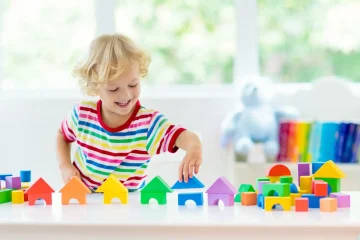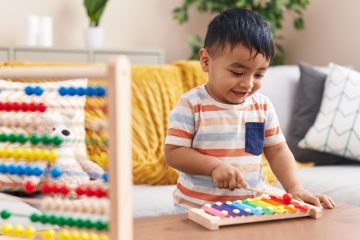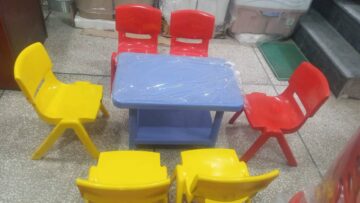
In today’s fast-paced world, developing emotional intelligence in children has become more crucial than ever. Emotional intelligence (EI) refers to the ability to understand, use, and manage emotions effectively. It is a key component of a child’s overall development and can significantly impact their success in personal and academic pursuits. One of the most effective and enjoyable ways to foster emotional intelligence in children is through the use of toys. In this article, we will explore the vital role that toys play in teaching emotional intelligence and how parents and educators can harness their potential to nurture emotionally intelligent children.
Understanding Emotional Intelligence
Before delving into the role of toys, it is important to understand the fundamental aspects of emotional intelligence. EI is typically broken down into four main components:
- Self-Awareness: Recognizing one’s own emotions and their impact on thoughts and behavior.
- Self-Regulation: Managing one’s emotions in healthy ways, including handling stress, controlling impulses, and motivating oneself.
- Social Awareness: Understanding and empathizing with the emotions of others.
- Relationship Management: Developing and maintaining healthy relationships through effective communication, conflict resolution, and cooperation.
Developing these skills from an early age can lead to better emotional and social outcomes, making children more resilient and adaptable in various life situations.
The Power of Play
Play is a natural and essential part of childhood. Through play, children explore the world around them, learn new skills, and develop emotionally and socially. Toys, as tools of play, can be instrumental in teaching emotional intelligence. They provide opportunities for children to engage in activities that foster self-awareness, self-regulation, social awareness, and relationship management.

Encouraging Self-Awareness
Toys that encourage self-expression and creativity can help children become more self-aware. For example, art supplies like crayons, paints, and modeling clay allow children to express their feelings and thoughts visually. This creative process can help them recognize and understand their own emotions. Similarly, musical instruments can enable children to express themselves through sound and rhythm, providing another avenue for emotional exploration.
Fostering Self-Regulation
Toys that require patience, concentration, and problem-solving can help children develop self-regulation skills. Building blocks, puzzles, and board games are excellent examples. These toys challenge children to stay focused, control their impulses, and manage frustration when things don’t go as planned. Over time, they learn to approach challenges with a calm and positive mindset, which is essential for emotional regulation.
Promoting Social Awareness
Social awareness involves understanding and empathizing with the emotions of others. Toys that promote cooperative play and role-playing can be particularly effective in this regard. Dolls, action figures, and stuffed animals allow children to create and act out various scenarios, helping them explore different perspectives and emotions. Through pretend play, children learn to recognize and respond to the feelings of others, developing empathy and social understanding.
Enhancing Relationship Management
Effective communication and conflict resolution are crucial components of relationship management. Toys that encourage group play and teamwork can help children develop these skills. Board games, team sports equipment, and interactive toys that require collaboration can teach children how to communicate effectively, share responsibilities, and resolve conflicts amicably. These experiences build a foundation for healthy relationships in the future.
Types of Toys that Teach Emotional Intelligence
There is a wide range of toys available that can aid in the development of emotional intelligence. Here are some categories of toys that are particularly effective:
1. Creative Arts and Crafts Toys
Creative arts and crafts toys allow children to express themselves freely. These toys include drawing and painting kits, modeling clay, and craft supplies. By engaging in creative activities, children can explore their emotions and develop a deeper understanding of themselves.
2. Building and Construction Toys
Building and construction toys, such as LEGO sets, building blocks, and magnetic tiles, promote problem-solving and patience. These toys require children to follow instructions, think critically, and manage their emotions when faced with challenges.
3. Role-Playing Toys
Role-playing toys, including dolls, action figures, and dress-up costumes, encourage imaginative play. Through role-playing, children can step into different characters’ shoes, explore various emotions, and develop empathy for others.
4. Board Games and Puzzles
Board games and puzzles teach children important skills like turn-taking, cooperation, and strategic thinking. These games often involve social interaction and require players to communicate and work together effectively.
5. Interactive and Electronic Toys
Interactive and electronic toys, such as robotic pets and interactive storybooks, can engage children in ways that stimulate their emotional and social development. These toys often provide feedback and responses that help children understand cause and effect and develop emotional connections.

Tips for Parents and Educators
To maximize the benefits of toys in teaching emotional intelligence, parents and educators can follow these tips:
1. Choose Age-Appropriate Toys
Select toys that are suitable for the child’s age and developmental stage. Age-appropriate toys ensure that the child can engage with the toy effectively and safely.
2. Encourage Open-Ended Play
Provide toys that allow for open-ended play, where there are no fixed rules or outcomes. Open-ended toys, such as building blocks and art supplies, enable children to use their imagination and creativity freely.
3. Participate in Play
Join children in their play activities. Parental involvement can enhance the learning experience, as adults can model positive behaviors, guide emotional discussions, and provide support when needed.
4. Discuss Emotions
Use playtime as an opportunity to discuss emotions. Ask children how they feel about certain situations and characters during play. Encourage them to talk about their own emotions and help them identify and label their feelings.
5. Create a Positive Play Environment
Ensure that the play environment is positive and supportive. Praise children for their efforts, encourage cooperation, and create a safe space where they feel comfortable expressing themselves.
Conclusion
Toys play a pivotal role in teaching emotional intelligence to children. Through creative arts, building activities, role-playing, and interactive play, children can develop self-awareness, self-regulation, social awareness, and relationship management skills. By choosing appropriate toys and actively participating in play, parents and educators can harness the power of play to nurture emotionally intelligent and well-rounded children. At Chunnumunnu.pk, we believe in the importance of emotional development and offer a wide range of toys designed to support this crucial aspect of a child’s growth. Explore our collection and discover the perfect toys to help your child thrive emotionally and socially.
















